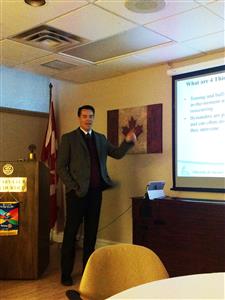KPRDSB Superintendent Joseph Tompkins Bullying
Types of Bullying-Bullying evolves throughout childhood
Physical Bullying-Includes hitting, kicking, shoving, spitting, beating up, stealing or damaging property. While physical bullying causes harm to a child’s body or property, the below forms of bullying cause psychological harm. Such offensive, degrading and rejecting behaviours undermine and destabilize victimized children’s sense of themselves, of their place in the school, and of their place in the world.
Verbal Bullying-Includes name-calling, mocking, hurtful teasing, insults, slurs, humiliating or threatening someone, racist comments, or sexual harassment.
Social Bullying-Includes rolling your eyes or turning away from someone, excluding others from the group, getting others to ignore or exclude, gossiping or spreading rumours, setting others up to look foolish, and damaging reputations and friendships.
Electronic or Cyberbullying-Includes the use of email, cell phones, text messages, and internet sites to threaten, harass, embarrass, socially exclude, or damage reputations and friendships.
Racial Bullying-Includes treating people badly because of their racial or ethnic background, saying bad things about a cultural background, calling someone racist names or telling racist jokes.
Religious Bullying-Includes treating people badly because of their religious background or beliefs, making negative comments about a religious background or belief, calling someone names or telling jokes based on his of her religious beliefs in an effort to hurt them.
Sexual Bullying-Includes leaving someone out; treating them badly, or making them feel uncomfortable because of their sex; making sexist comments or jokes; touching, pinching or grabbing someone in a sexual way; making crude comments about someone’s sexual behaviour or orientation; or spreading a sexual rumour.
Disability Bullying-Includes leaving someone out or treating them badly because of a disability, making someone feel uncomfortable, or making jokes to hurt someone because of a disability.
For more .gif) information on Bullying and Bullying Prevention visit:
information on Bullying and Bullying Prevention visit:
http://www.kprdsb.ca/content/dam/kpr/documents/cyber_bullying_brochure_11-1027_final.pdf
or http://www.kprdsb.ca/content/dam/kpr/documents/ParentsGuidetoBullying.pdf
to report bullying complete and submit this form http://kprforms.kprdsb.ca/Report_Bullying/report.asp
For Canada's authority on research and resources for bullying prevention visit  at http://www.prevnet.ca
at http://www.prevnet.ca
